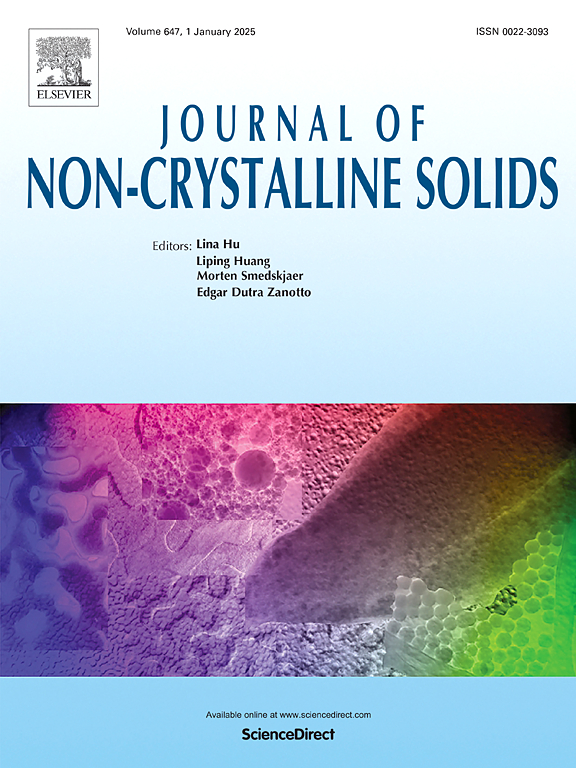通过数据驱动和可解释的机器学习预测玄武岩熔体的粘度
IF 3.2
3区 材料科学
Q1 MATERIALS SCIENCE, CERAMICS
引用次数: 0
摘要
玄武岩纤维是一种以天然玄武岩矿石为原料,通过高温熔化和成丝制成的高性能纤维。玄武岩熔体的粘度对调节熔化过程和提高成型纤维的性能起着至关重要的作用。在此,我们从报告论文和自测样品中收集了玄武岩中氧化物成分、温度和相应熔体粘度的数据集。通过使用数据驱动和可解释的机器学习技术,建立了随机森林和梯度提升决策树两种模型。这两个模型都能学习数据集,并根据输入的氧化物成分和温度预测熔体粘度。对建立的模型进行了夏普利加法解释,从而了解了影响粘度的各种氧化物成分的重要性和模式。在这些发现的基础上,对矿石熔化和成丝的温度参数进行了预测,并利用自测样品在纤维纺丝设备上获得了连续的玄武岩纤维。本文章由计算机程序翻译,如有差异,请以英文原文为准。
Predicting the viscosity of basalt melt by data-driven and interpretable machine learning
Basalt fiber is a high-performance fiber made from natural basalt ore by high-temperature melting and filament-forming. The viscosity of basalt melt plays crucial role in regulating melting process and enhancing properties of formed fiber. Here, a dataset of oxide composition in basalt, temperature, and corresponding melt viscosity was collected from reported papers and self-tested samples. By using data-driven and interpretable machine learning technique, two models of Random Forest and Gradient Boosting Decision Tree were established. Both models could learn the dataset and predicted the melt viscosity from the input oxide composition and temperature. A Shapley additive interpretation was conducted on built models, which led to an understanding of significance and pattern of various oxide compositions that impact viscosity. Based on these findings, a prediction on temperature parameters for ore melting and filament-forming was achieved, and continuous basalt fibers were obtained on a fiber spinning facility by using self-tested samples.
求助全文
通过发布文献求助,成功后即可免费获取论文全文。
去求助
来源期刊

Journal of Non-crystalline Solids
工程技术-材料科学:硅酸盐
CiteScore
6.50
自引率
11.40%
发文量
576
审稿时长
35 days
期刊介绍:
The Journal of Non-Crystalline Solids publishes review articles, research papers, and Letters to the Editor on amorphous and glassy materials, including inorganic, organic, polymeric, hybrid and metallic systems. Papers on partially glassy materials, such as glass-ceramics and glass-matrix composites, and papers involving the liquid state are also included in so far as the properties of the liquid are relevant for the formation of the solid.
In all cases the papers must demonstrate both novelty and importance to the field, by way of significant advances in understanding or application of non-crystalline solids; in the case of Letters, a compelling case must also be made for expedited handling.
 求助内容:
求助内容: 应助结果提醒方式:
应助结果提醒方式:


